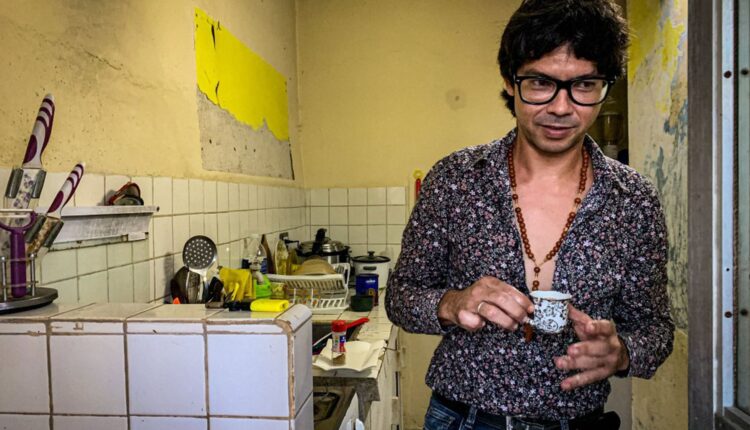 Yunior García
Yunior García
Yunior García, the main promoter of the protests in Cuba, lands in Spain
From El País
The main leader of the Cuban opposition movement Archipelago, Yunior García, convener of the frustrated civic march for change on November 15, arrived in Spain on Wednesday, according to the Europa Press agency, and confirmed by Spanish diplomatic sources who indicated that his departure from the country was “at his own request.”
The news surprised the Archipelago group, which this Wednesday on its Facebook page considered the activist disappeared after one of its members went to his house and no one answered the door. Diplomatic sources indicated that for days discreet arrangements were being made for García’s trip, who had a valid, long-term visa to enter Spain. García flew to Madrid on Tuesday on an Iberia flight in the company of his wife, Dayana Prieto.
The Cuban government has assured that there has been no agreement between Havana and Madrid to facilitate the departure of the dissident from the island, reports the Efe agency. A government representative assured that the Cuban authorities “have nothing to do” with the trip and considered that the activist had processed the tourist visa on his behalf.
Sources close to García said that his decision to leave Cuba was due to “brutal police pressure suffered in recent weeks.” “Now we have to wait for him to speak there and give his reasons,” adds one of his close friends. Last Sunday, García wanted to parade alone through a central Havana neighborhood as a sign of protest and to prevent violence against the 15-N protesters. Throughout the day he was surrounded at his home by people close to the Government and security agents in civilian clothes who did not allow him to leave the house and organized an act of repudiation against him.
Garcia’s last public words are from Sunday, when he was locked in his house and communicated via Facebook. “I was going to do a solo march, carrying only a white rose from Quijote Park to the Malecón. That does not violate any right, on the contrary, it is my human and constitutional right, but apparently they are not even willing to allow that,” he said then, assuring that he maintained his will to parade dressed in white as soon as he could.
“Ugly days in Cuba”
In this message, he also said: “We are living very ugly days in Cuba. Unfortunately, we are experiencing the worst of times, moments that Cuban artists know very well, those of the gray quinquennium [the period of the 1970s of the 20th century in which hundreds of writers, playwrights and artists were persecuted and expelled from their jobs for being homosexual or not complying with revolutionary “parameters”] and the terrible acts of repudiation, of hatred against some Cubans, and others.”
García criticized the Government for not allowing people like him to express themselves in the streets, who demand elementary citizen rights, while other “young people are allowed to demonstrate in Central Park because they are favorable to the Revolution, or what they call Revolution, which they have removed all their masks showing that they are a conservative dictatorship.” He alluded to the act that was held at the same time in the historic center of Havana, organized in support of the Government, which was attended by the Cuban president, Miguel Díaz-Canel.
The 15-N demonstration was initially supposed to take place in Havana and various cities in the country on a predetermined route, for which official permission was requested from the Government. The one in the capital was to run at three in the afternoon on Monday from the Malecón to Central Park, where protesters would deposit a wreath before the statue of the national hero, José Martí. The request was declared illegal and the organizers were warned by the Prosecutor’s Office that if they went out on the street that day, the full weight of the law would fall on them.
From there, Archipelago denounced an unprecedented pressure campaign, with acts of repudiation, media offensives to discredit, arbitrary arrests, intimidation of families, job dismissals and jail sentences to those detained during the July 11 protests. Faced with this situation, García announced a change in strategy to prevent violence against protesters, or so that they would not be sent to jail, and announced his decision to march only on Sunday. The initial liturgy of the 15-N protest was also changed, and people were asked to wear white that day and go out into the streets without parading along a certain route. There were also calls for the banging of pots and pans.
The main leaders of the march for change woke up on 15-N with their houses under police surveillance and with the express prohibition of going out on the streets. Many were subjected to acts of repudiation, as happened the day before with the main leader of the protest, García. Opposition sources reported that several historical dissidents were arrested. On the streets of Havana, especially in the neighborhoods and public spaces that are the most crowded and marked since the July 11 demonstrations, including the Malecón, Paseo del Prado and the Capitol, the police presence was large, both in uniform and civilian clothes. There were no marches.

